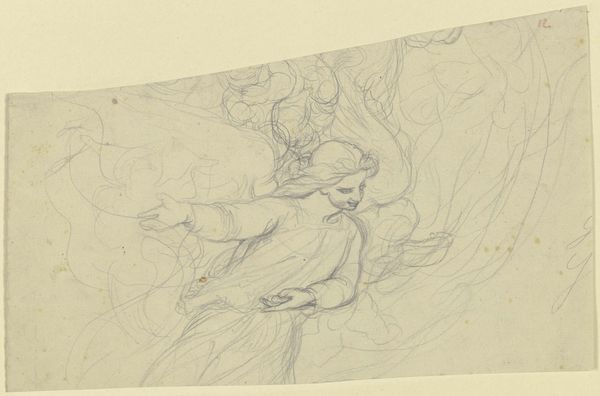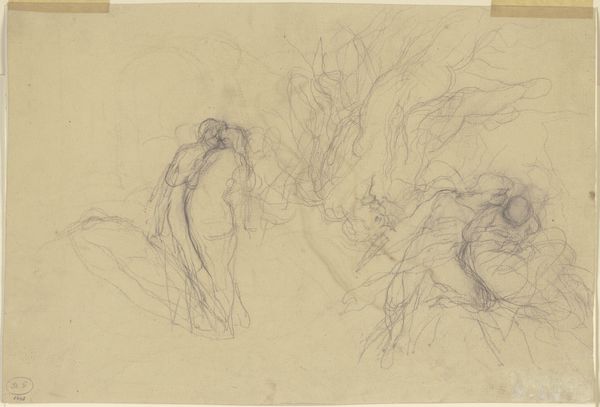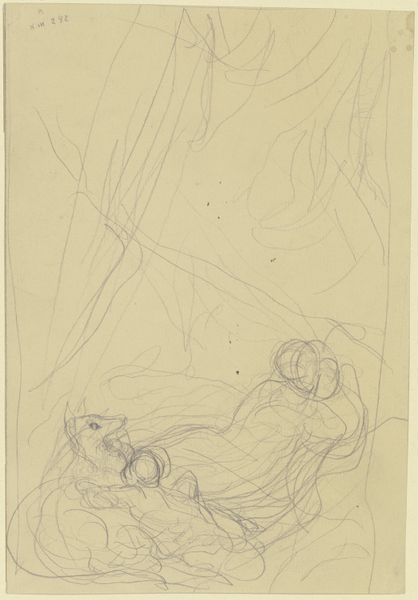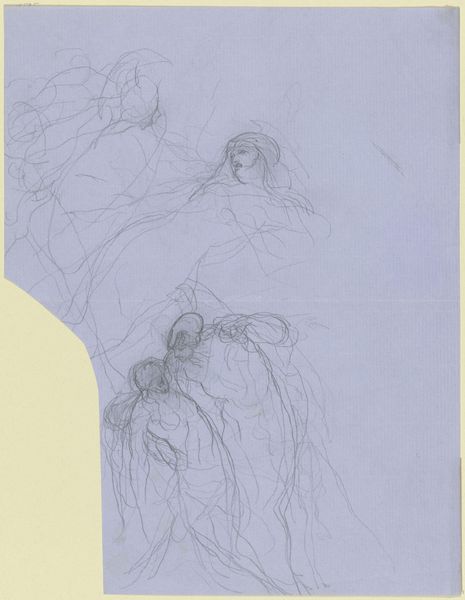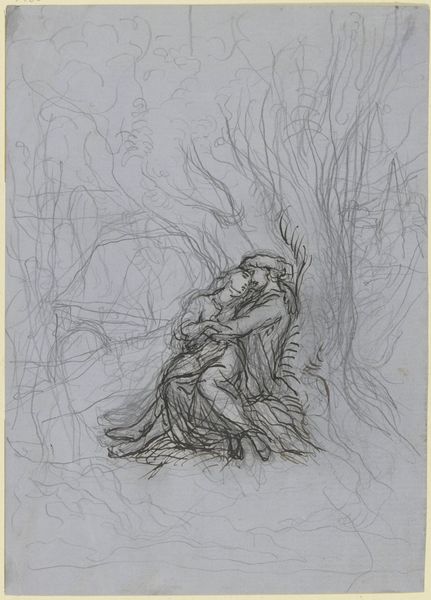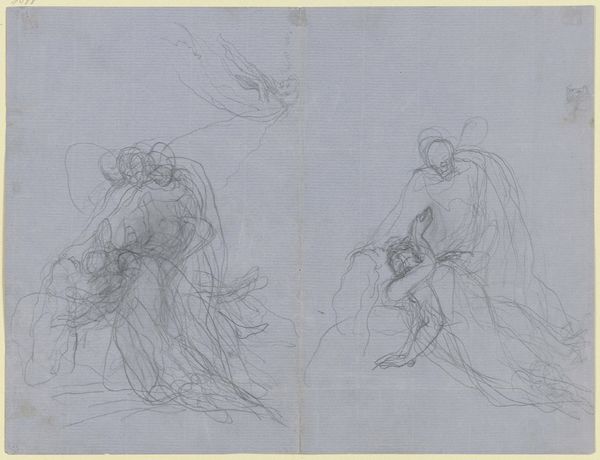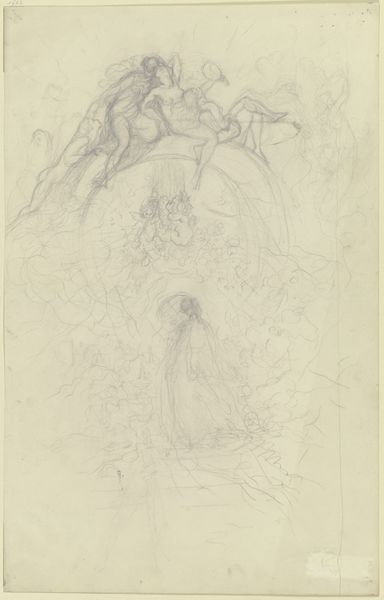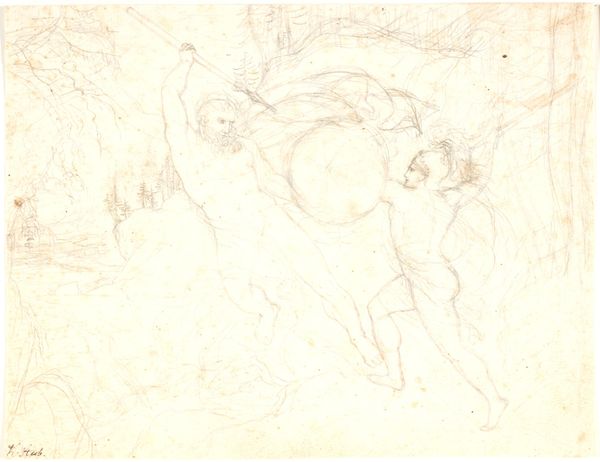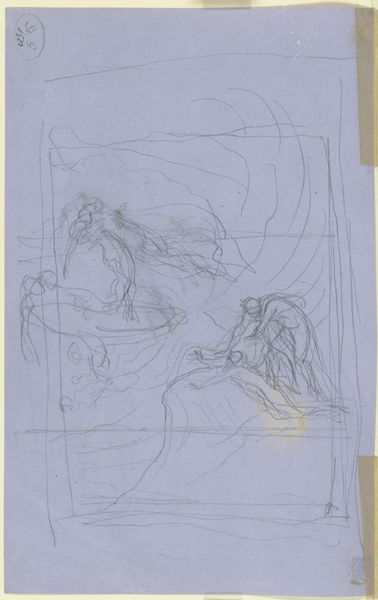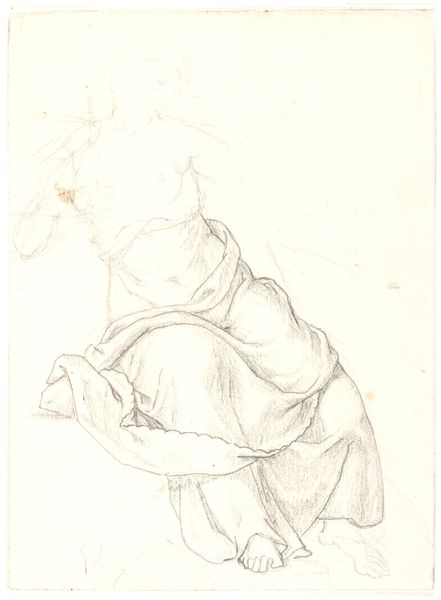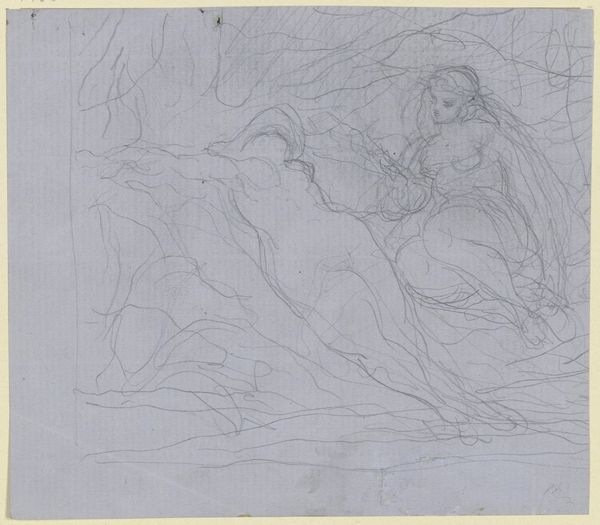
drawing, paper, pencil
#
drawing
#
figuration
#
paper
#
pencil
Copyright: Public Domain
Victor Müller sketched these cherubs, likely in the late 19th century, capturing figures that have danced through art history for centuries. These aren't just any babies with wings; they're potent symbols of divine love and innocence, often seen in Renaissance art. The cherub motif has roots stretching back to ancient Mesopotamia, where winged figures guarded sacred spaces. Fast forward to the Renaissance, and we see these figures transformed into the chubby, playful angels we recognize today, often associated with Cupid, the god of love. Consider Botticelli's "Birth of Venus," where cherubs guide the goddess to shore, or Raphael's "Sistine Madonna," guarded by two iconic cherubs. It speaks to a collective memory, a cultural echo resonating across centuries. These figures engage us on a subconscious level, tapping into our innate desire for love, protection, and a return to innocence, and their continued presence in art reveals the cyclical nature of cultural symbols, forever evolving and adapting to new contexts.
Comments
No comments
Be the first to comment and join the conversation on the ultimate creative platform.
